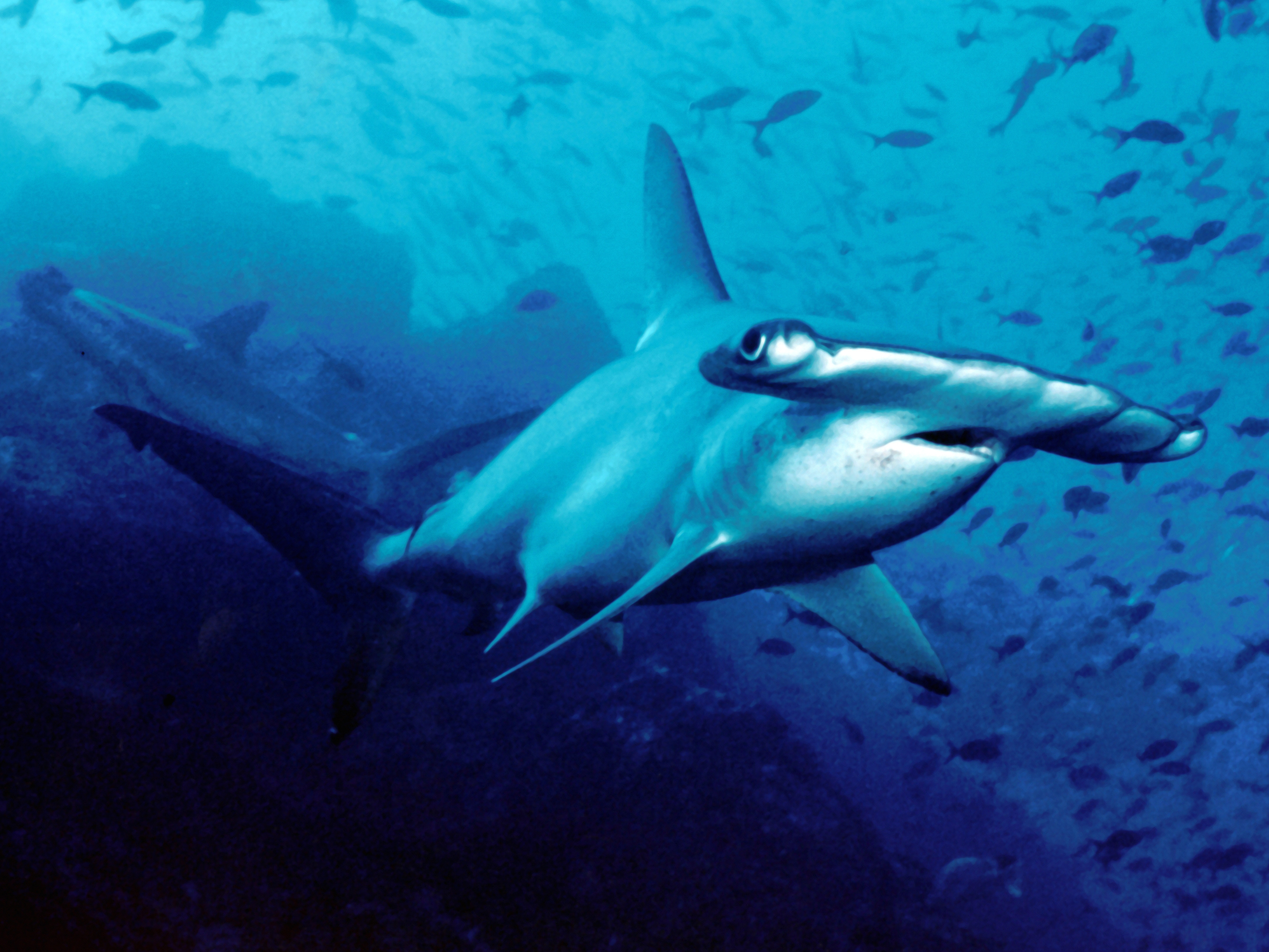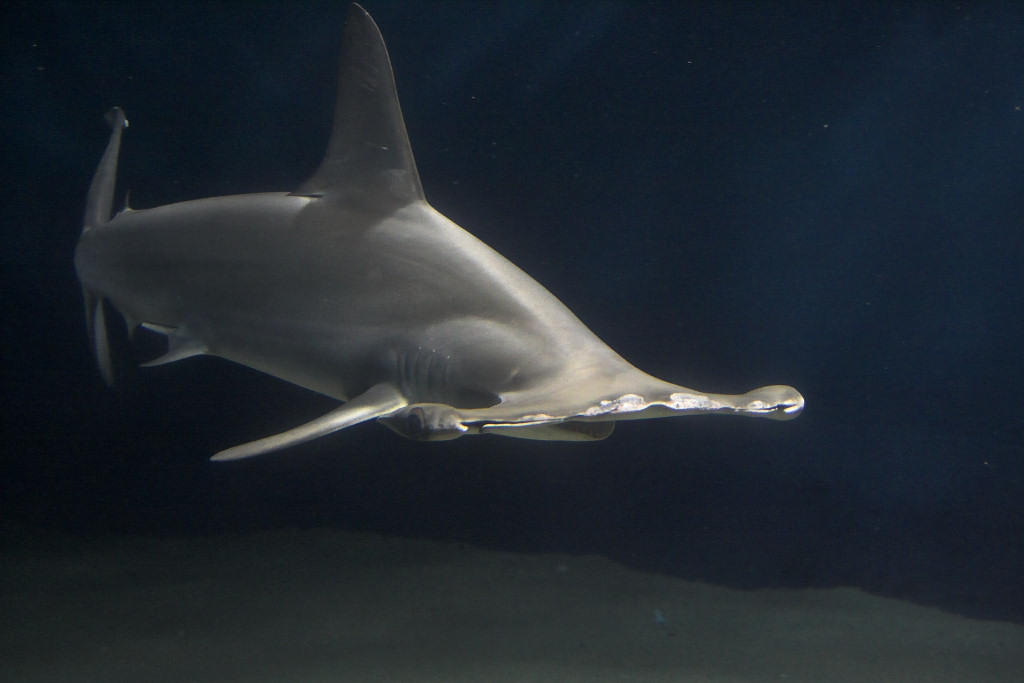|
Sphyrna
''Sphyrna'' is a genus of hammerhead sharks with a cosmopolitan distribution in the world's oceans. Members of ''Sphyrna'' have a tendency to inhabit coastal waters along the intertidal zone rather than the open ocean, as their prey such as invertebrates, fish, rays, small crustaceans, and other benthic organisms hide in the sands and sediment along these zones. Members of ''Sphyrna'' are also known by synonyms such as ''Zygaena'', ''Cestracion'', and ''Sphyrichthys''. The earliest species described of this genus was '' Sphyrna zygaena'' by Carl Linnaeus in 1758, while the latest described member, '' Sphyrna alleni'', was described in 2024. The genus name comes from the Greek word ''sphyra'' "hammer", it is also where the family name Sphyrnidae comes from. Species The recognized species in this genus are: ;Extant * '' Sphyrna alleni'' Gonzalez, Postaire, Driggers, Caballero, & Chapman, 2024 (shovelbill shark)Gonzalez, C., Postaire, B., Driggers, W., Caballero, S. & Ch ... [...More Info...] [...Related Items...] OR: [Wikipedia] [Google] [Baidu] |
Sphyrna Lewini
The scalloped hammerhead (''Sphyrna lewini'') is a species of hammerhead shark in the family (biology), family Hammerhead shark, Sphyrnidae. It was originally known as ''Zygaena lewini''. The Greek language, Greek word ''sphyrna'' translates into "hammer" in English, referring to the shape of this shark's head, which is its most distinguishing characteristic. The shark's eyes and nostrils are at the tips of the extensions. It is a fairly large hammerhead, but is still smaller than both the Great hammerhead, great and smooth hammerheads. This shark is also known as the bronze, kinky-headed, or southern hammerhead. It primarily lives in warm, temperate, and tropical coastal waters all around the globe between latitudes 46th parallel north, 46°N and 36th parallel south, 36°S, down to a depth of . It is the most common of all hammerheads. Taxonomy The scalloped hammerhead was first named ''Zygaena lewini'' and then renamed ''Sphyrna lewini'' by Edward Griffith (zoologist), Edward G ... [...More Info...] [...Related Items...] OR: [Wikipedia] [Google] [Baidu] |
Hammerhead Shark
The hammerhead sharks are a group of sharks that form the family Sphyrnidae, named for the unusual and distinctive form of their heads, which are flattened and laterally extended into a Hammerhead shark#Cephalofoil, cephalofoil (a T-shape or "hammer"). The shark's eyes are placed one on each end of this T-shaped structure, with their small mouths directly centered and underneath. Most hammerhead species are placed in the genus ''Sphyrna'', while the winghead shark is placed in its own genus, ''Eusphyra''. Many different—but not necessarily mutually exclusive—functions have been postulated for the cephalofoil, including sensory reception, manoeuvering, and prey manipulation. The cephalofoil gives the shark superior binocular vision and depth perception. Hammerheads are found worldwide, preferring life in warmer waters along coastlines and continental shelves. Unlike most sharks, some hammerhead species will congregate and swim in large Shoaling and schooling, schools during ... [...More Info...] [...Related Items...] OR: [Wikipedia] [Google] [Baidu] |
Hammerhead Sharks
The hammerhead sharks are a group of sharks that form the family Sphyrnidae, named for the unusual and distinctive form of their heads, which are flattened and laterally extended into a cephalofoil (a T-shape or "hammer"). The shark's eyes are placed one on each end of this T-shaped structure, with their small mouths directly centered and underneath. Most hammerhead species are placed in the genus ''Sphyrna'', while the winghead shark is placed in its own genus, '' Eusphyra''. Many different—but not necessarily mutually exclusive—functions have been postulated for the cephalofoil, including sensory reception, manoeuvering, and prey manipulation. The cephalofoil gives the shark superior binocular vision and depth perception. Hammerheads are found worldwide, preferring life in warmer waters along coastlines and continental shelves. Unlike most sharks, some hammerhead species will congregate and swim in large schools during the day, becoming solitary hunters at night. Descr ... [...More Info...] [...Related Items...] OR: [Wikipedia] [Google] [Baidu] |
Sphyrna Mokarran
The great hammerhead (''Sphyrna mokarran'') is the largest species of hammerhead shark, belonging to the family Sphyrnidae, attaining an average length of and reaching a maximum length of . It is found in tropical and warm temperate waters worldwide, inhabiting coastal areas and the continental shelf. The great hammerhead can be distinguished from other hammerheads by the shape of its "hammer" (called the "cephalofoil"), which is wide with an almost straight front margin, and by its tall, sickle-shaped first dorsal fin. A solitary, strong-swimming apex predator, the great hammerhead feeds on a wide variety of prey ranging from crustaceans and cephalopods, to bony fish, to smaller sharks. Observations of this species in the wild suggest that the cephalofoil functions to immobilize stingrays, a favored prey. This species has a viviparous mode of reproduction, bearing litters of up to 50 pups every two years. Although potentially dangerous, the great hammerhead rarely attacks human ... [...More Info...] [...Related Items...] OR: [Wikipedia] [Google] [Baidu] |
Sphyrna Tudes
The smalleye hammerhead (''Sphyrna tudes''), also called the golden hammerhead or curry shark, is a small species of hammerhead shark in the family Sphyrnidae. This species was historically common in the shallow coastal waters of the western Atlantic Ocean, from Venezuela to Uruguay. It favors muddy habitats with poor visibility, reflected by its relatively small eyes. Adult males and juveniles are schooling and generally found apart from the solitary adult females. Typically reaching in length, this shark has a unique, bright golden color on its head, sides, and fins, which was only scientifically documented in the 1980s. As in all hammerheads, its head is flattened and laterally expanded into a hammer-shaped structure called the cephalofoil, which in this species is wide and long with an arched front margin bearing central and lateral indentations. The yellow-orange pigments of the smalleye hammerhead seem to have been acquired from the penaeid shrimp ''Xiphopenaeus kroyeri'', ... [...More Info...] [...Related Items...] OR: [Wikipedia] [Google] [Baidu] |
Sphyrna Zygaena
The smooth hammerhead (''Sphyrna zygaena'') is a species of hammerhead shark, and part of the family Sphyrnidae. This species is named "smooth hammerhead" because of the distinctive shape of the head, which is flattened and laterally extended into a hammer shape (called the "cephalofoil"), without an indentation in the middle of the front margin (hence "smooth"). Unlike other hammerheads, this species prefers temperate waters and occurs worldwide at medium latitudes. In the summer, these sharks migrate towards the poles following cool water masses, sometimes forming schools numbering in the hundreds to thousands. The second-largest hammerhead shark after the great hammerhead shark, the smooth hammerhead can measure up to long. It is an active predator that takes a wide variety of bony fishes and invertebrates, with larger individuals also feeding on sharks and rays. As in the rest of its family, this shark is viviparous and gives birth to litters of 20–40 pups. A relativel ... [...More Info...] [...Related Items...] OR: [Wikipedia] [Google] [Baidu] |
Sphyrna Tiburo
The bonnethead (''Sphyrna tiburo''), also called a bonnet shark or shovelhead, is a small member of the hammerhead shark genus ''Sphyrna'', and part of the family Sphyrnidae. It is an abundant species in the littoral zone of the North Atlantic and the Gulf of Mexico, is the only shark species known to display sexual dimorphism in the morphology of the head, and is the only shark species known to be omnivorous. Description The shark is characterized by a broad, smooth, spade-like head: it has the smallest cephalofoil (hammerhead) of all ''Sphyrna'' species. The body is grey-brown above and lighter on the underside. Typically, bonnethead sharks are about long, with a maximum size of about . The generic name ''Sphyrna'' probably derives from a misspelling of '' sphyra '', the Greek word for "hammer"; the specific name ''tiburo'' derives from the Spanish word , meaning "shark". Sphyrna tiburo head.jpg, Head, underside Sphyrna tiburo head2.jpg, Head, upper side Sphyrna tiburo uppe ... [...More Info...] [...Related Items...] OR: [Wikipedia] [Google] [Baidu] |
Sphyrna Media
The scoophead (''Sphyrna media'') is a little-known species of hammerhead shark, part of the family Sphyrnidae. It inhabits the tropical waters of the western Atlantic Ocean, from Panama to southern Brazil, and in the eastern Pacific Ocean from the Gulf of California to Ecuador, and probably northern Peru, as well. It is found in shallow, inshore habitats. One of the smaller hammerheads, the scoophead measures 150 cm long; adult males measure 90 cm long and adult females 100–133 cm. It is distinguished by its moderately broad, mallet-shaped head (22–33% as wide as the body is long). The forward margin of the head is arched, with weak medial and lateral indentations and no prenarial grooves, traits that this species shares with the scalloped bonnethead (''Sphyrna corona''). It is distinguished from the scalloped bonnethead by its shorter snout, broadly arched mouth, and deeply concave anal fin. The first dorsal fin is moderately falchate, and the second dorsal ... [...More Info...] [...Related Items...] OR: [Wikipedia] [Google] [Baidu] |
Sphyrna Alleni
''Sphyrna alleni'', the shovelbill shark, is a species of hammerhead shark found along the West Atlantic coast from Belize to Brazil. Its pointed cephalofoil distinguishes it from the more northern bonnethead shark (''Sphyrna tiburo''), from which it was split in 2024. The species is also diagnosed by different tooth and precaudal vertebrae counts. Etymology The species is named after Microsoft co-founder Paul Allen. The Paul G. Allen Family Foundation funded the research efforts that led to the discovery of the species. The common name of "shovelbill shark" corresponds to the name used for the shark in Belize, where the holotype was discovered. Discovery A 2012 study of the mitochondrial gene NADH2 across elasmobranchs compared bonnethead shark specimens from the Gulf of Mexico and Trinidad, and found that the two groups clustered separately, and that ''Sphyrna tiburo'' was likely a species complex. The southern lineage was provisionally referred to as ''Sphyrna'' cf. ''tib ... [...More Info...] [...Related Items...] OR: [Wikipedia] [Google] [Baidu] |
Sphyrna Corona
The scalloped bonnethead (''Sphyrna corona'') is a rare, little-known species of hammerhead shark in the family Sphyrnidae. Its other common names include the mallethead shark and the crown shark. It is found in tropical and subtropical waters in the eastern Pacific Ocean, from Mexico to Peru, and possibly as far north as the Gulf of California.Compagno, Leonard J. V. (1984) ''Sharks of the World: An Annotated and Illustrated Catalogue of Shark Species Known to Date''. Rome: Food and Agriculture Organization. . It frequents inshore habitats over soft bottoms (mud, sand, and gravel) to a depth of 100 m, and also enters mangroves and estuaries. Probably the smallest species of hammerhead shark, the scalloped bonnethead measures up to long. Its mallet-shaped head, called a cephalofoil, is moderately wide (24–29% of total length) and elongated lengthwise. The front margin is broadly arched, with shallow lateral and medial indentations, and no prenarial grooves. The mouth is small a ... [...More Info...] [...Related Items...] OR: [Wikipedia] [Google] [Baidu] |
Sphyrna Gilberti
The Carolina hammerhead (''Sphyrna gilberti'') is a species of hammerhead shark, and part of the family (biology), family Hammerhead shark, Sphyrnidae, found in the western Atlantic Ocean. Their pupping grounds are in nearshore waters off the southeastern U.S. with the highest concentrations found in Bulls Bay, South Carolina. The Carolina hammerhead has also been found in nearshore waters off of Brazil. It was formally described in 2013. It is currently classified as Vulnerable species, Vulnerable (VU) on the IUCN Red List due to overfishing and habitat degradation. Little is known about the habits of the species. It is a sister species to ''Sphyrna lewini, S. lewini''. As of 2013 This species has been a relatively new addition to the hammerhead shark genus. The species possesses a major genetic difference from their cousins, most notable differences is the lower vertebral number and a lighter outer tone. The Carolina hammerhead is named in honor of Carter Gilbert, who unknowingl ... [...More Info...] [...Related Items...] OR: [Wikipedia] [Google] [Baidu] |






